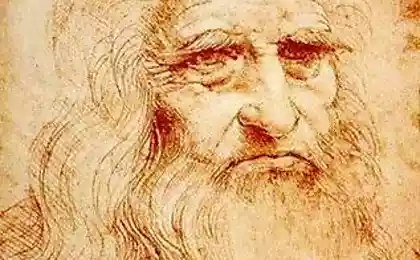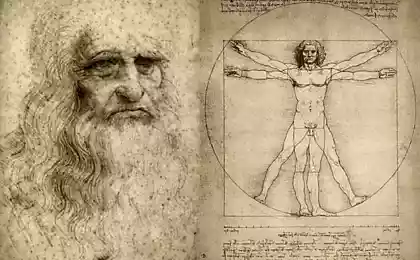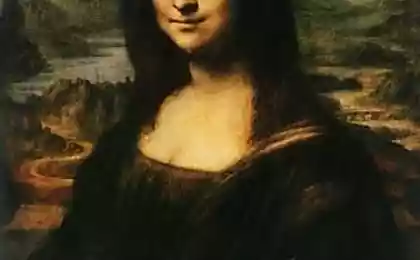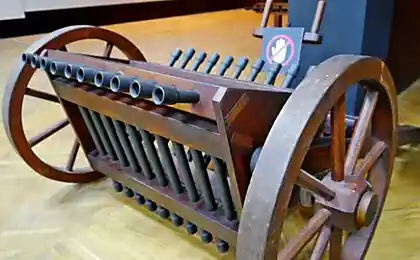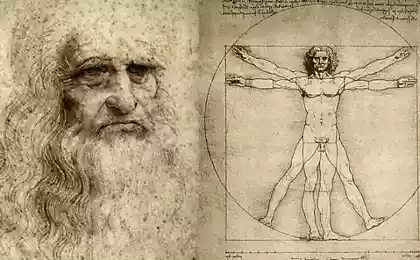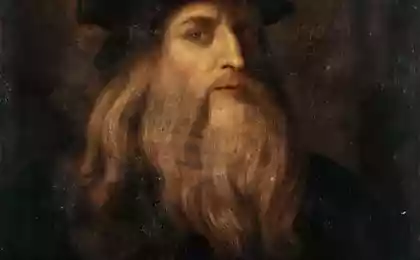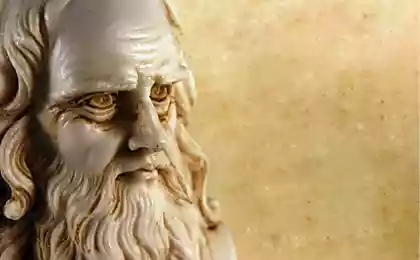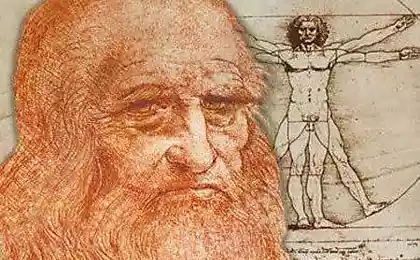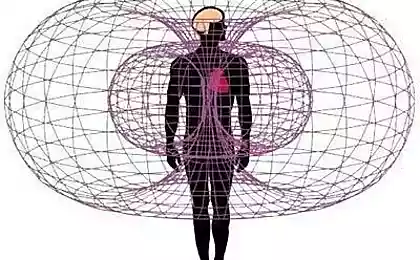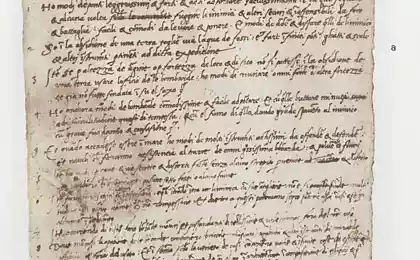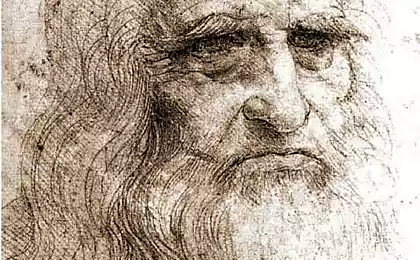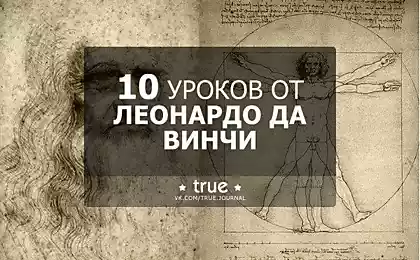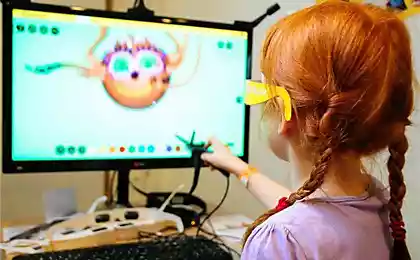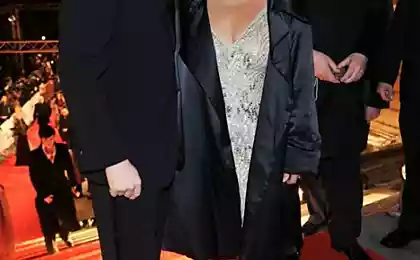1250
The lost masterpiece by Leonardo da Vinci
The researchers found in the Florentine Palazzo Vecchio traces of frescoes, which are likely painted by the legendary creator of the "Mona Lisa." Now researchers claim to have found the first hard evidence that the fresco, painted by Leonardo da Vinci himself, under the battle mural, created in the later period of Giorgio Vasari.
15 photos from here
1. In the photo: an art historian Maurizio Seracini and his team of researchers are studying a fresco by Giorgio Vasari, under which is presumed to be the work of Leonardo da Vinci.

2. there is still a huge reservoir of work, but the researchers made the discovery appears to resolve the issue, experts tormented more than five hundred years, the whereabouts of the fresco by Leonardo da Vinci. It seems that we are witnessing a colossal event in the history of art - one of the most significant events in decades. Photo: The restorer of frescoes (left in photo) discusses the further plan of work with the mayor of Florence, Matteo Renzi (pictured center) and art historian Maurizio Seracini.
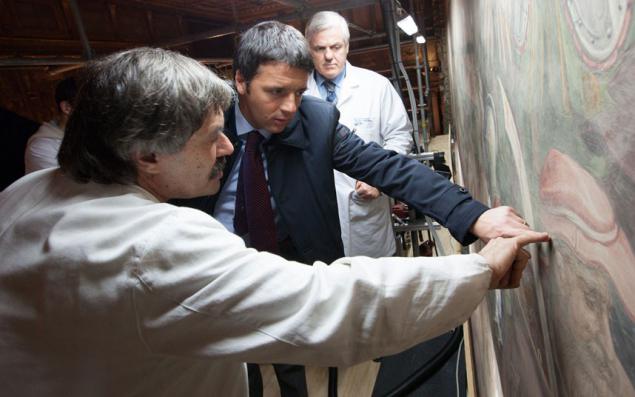
3. In 1503, Leonardo da Vinci was hired to create the painting "The Battle of Anghiari" Florentine rulers. The mural was placed in the so-called "Hall of Five Hundred" at the Palazzo Vecchio in Florence. Contemporaries called this work a masterpiece of Leonardo. However mural mysteriously disappeared when further work on the painting "the Hall of Five Hundred" in Palazzo Vecchio was hired another famous painting by Giorgio Vasari. It owns six brush Vasari frescoes, now adorning the walls of the hall. It was believed for a long time that the fresco by Leonardo da Vinci has been lost forever. In the photo: battle scene fresco by Giorgio Vasari, reminiscent of its composition by Leonardo da Vinci fresco "The Battle of Anghiari»
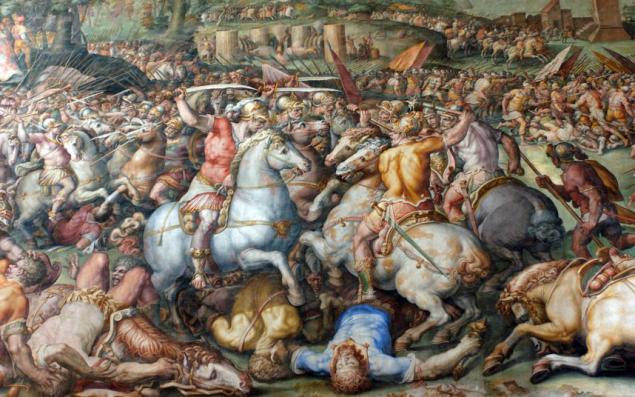
4. After a few centuries of debate about whether the mural could be preserved, a team of researchers led by the art historian Maurizio Seracini of the University of California, San Diego, has done a tiny hole in the existing cracks and splits fresco by Giorgio Vasari. In the photo: Using an endoscope, researchers are trying to find traces of a lost mural by Leonardo da Vinci's "Battle of Anghiari»
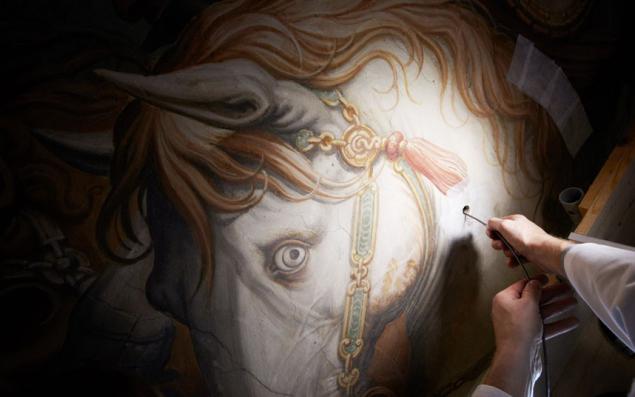
5. Through the resulting holes were inserted microchambers and special probes.

6. Using probes that failed to push through six holes in the wall with the fresco by Giorgio Vasari, the scientists were able to obtain samples - there were found black, red, white, orange and black paint pigment - evidence that a fresco there is another big picture size
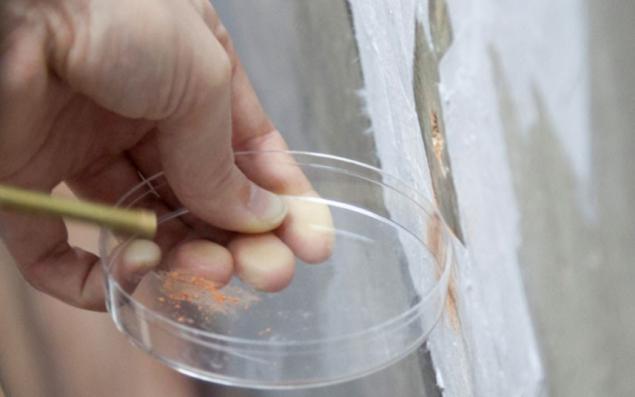
7. The main proof of the correctness of the theory that hides behind a fresco by Vasari, is the aforementioned black pigment - it is distinguished by a special composition, which includes manganese and iron, and coincides with the pigment of the formula which has been used by Leonardo da Vinci at work on "Mona Lisa" and "John the Baptist." Photo: with the probe, which is able to carry out through a hole in a wall fresco by Vasari, the scientists obtained samples for analysis of substances
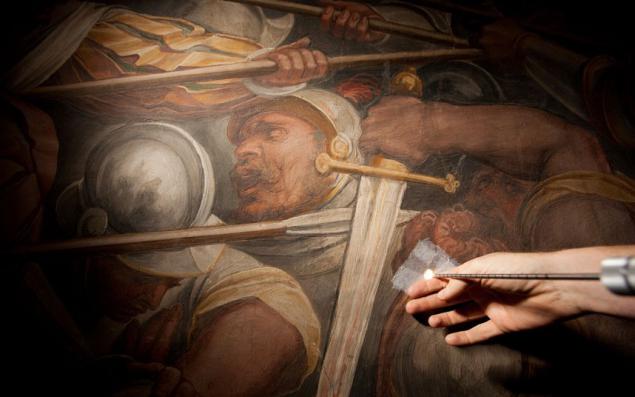
8. "This is a special type of dye that is only used by Leonardo da Vinci, and was not present in the works of other artists," said Dr. Seracini at a press conference in the "Hall of the Five Hundred." In the photo: an art historian Maurizio Seracini indicates a fresco by Giorgio Vasari.
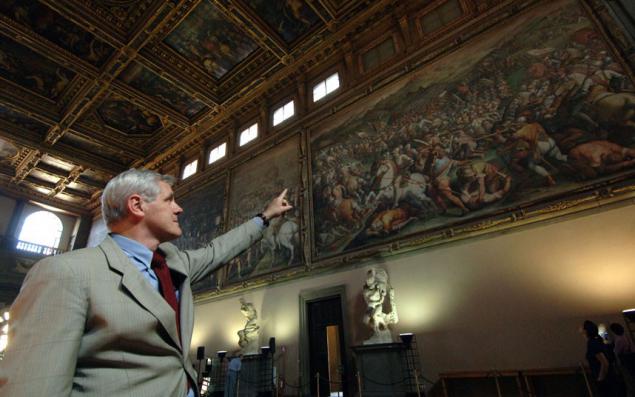
9. Now a team of researchers, led by art historian Maurizio Seracini wants to continue its work and make a series of holes in other parts of the wall fresco by Giorgio Vasari, to check whether the found new evidence that a fresco by Giorgio Vasari is really a lost masterpiece by Leonardo da Vinci. Pictured: a fragment of a fresco depicting a battle scene, owned by Giorgio Vasari.
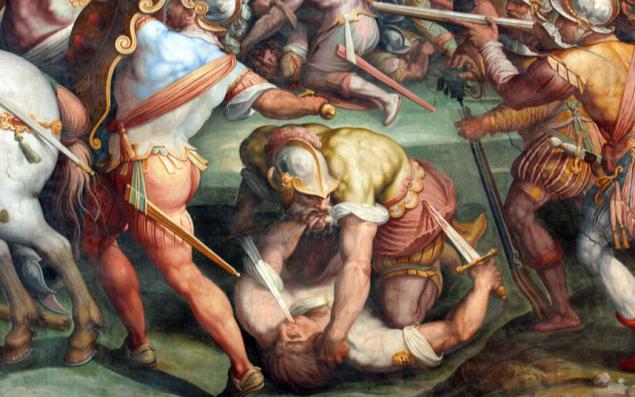
10. "This is a truly memorable day," said Terry Garcia, president of the Society National Geographic, which sponsored the research. "We waited a long time for this moment. This team of experts revealed the greatest mystery, which for five hundred years haunted many art critics and art lovers. This discovery is extremely important not only for Italy but for the whole world. "

11. Palazzo Vecchio in Florence.
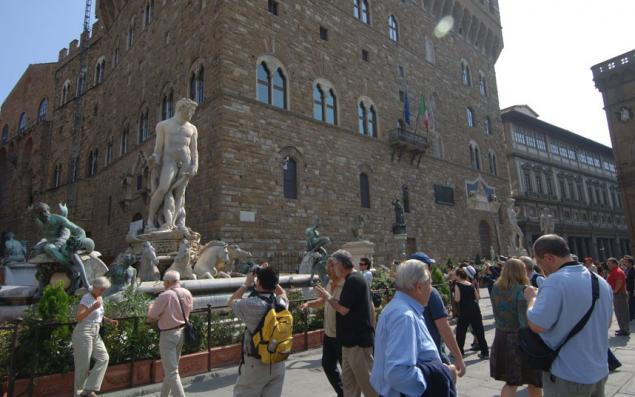
12. Sketch of a man's head, made by Leonardo da Vinci during the work on the creation of the fresco "The Battle of Anghiari."

13. A sketch made by Leonardo da Vinci during the work on the creation of the fresco "The Battle of Anghiari" (about 1504-1505 years, Black)
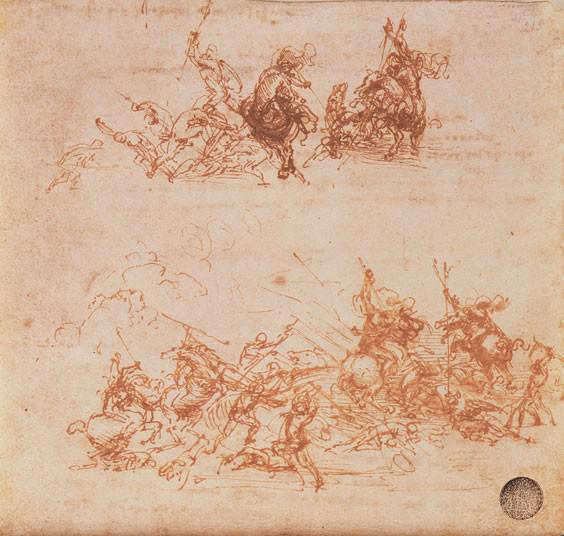
14. Art historian Maurizio Seracini exploring the mysterious inscription on a fresco by Giorgio Vasari. On the work of Giorgio Vasari you can see a group of soldiers who carried a pennant with the words «Cerca Trova» («Seek and ye shall find"). Seracini sure way Vasari had left a sign that it hides under his fresco.
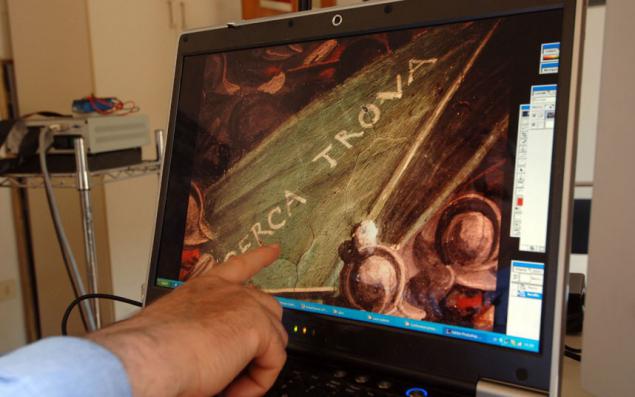
15. It might look like a fresco, which is hidden under the work of Giorgio Vasari in Florence Palazzo Vecchio.
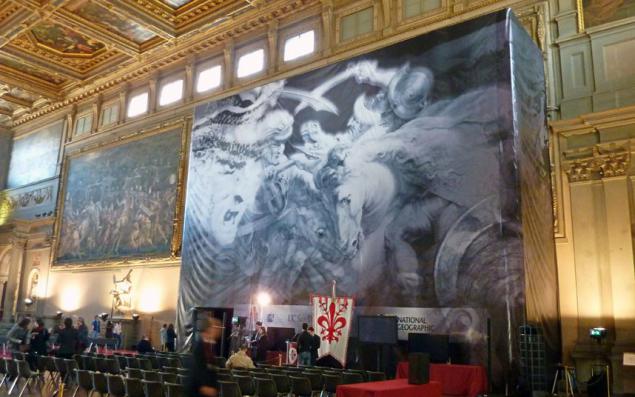
Source:
15 photos from here
1. In the photo: an art historian Maurizio Seracini and his team of researchers are studying a fresco by Giorgio Vasari, under which is presumed to be the work of Leonardo da Vinci.

2. there is still a huge reservoir of work, but the researchers made the discovery appears to resolve the issue, experts tormented more than five hundred years, the whereabouts of the fresco by Leonardo da Vinci. It seems that we are witnessing a colossal event in the history of art - one of the most significant events in decades. Photo: The restorer of frescoes (left in photo) discusses the further plan of work with the mayor of Florence, Matteo Renzi (pictured center) and art historian Maurizio Seracini.

3. In 1503, Leonardo da Vinci was hired to create the painting "The Battle of Anghiari" Florentine rulers. The mural was placed in the so-called "Hall of Five Hundred" at the Palazzo Vecchio in Florence. Contemporaries called this work a masterpiece of Leonardo. However mural mysteriously disappeared when further work on the painting "the Hall of Five Hundred" in Palazzo Vecchio was hired another famous painting by Giorgio Vasari. It owns six brush Vasari frescoes, now adorning the walls of the hall. It was believed for a long time that the fresco by Leonardo da Vinci has been lost forever. In the photo: battle scene fresco by Giorgio Vasari, reminiscent of its composition by Leonardo da Vinci fresco "The Battle of Anghiari»

4. After a few centuries of debate about whether the mural could be preserved, a team of researchers led by the art historian Maurizio Seracini of the University of California, San Diego, has done a tiny hole in the existing cracks and splits fresco by Giorgio Vasari. In the photo: Using an endoscope, researchers are trying to find traces of a lost mural by Leonardo da Vinci's "Battle of Anghiari»

5. Through the resulting holes were inserted microchambers and special probes.

6. Using probes that failed to push through six holes in the wall with the fresco by Giorgio Vasari, the scientists were able to obtain samples - there were found black, red, white, orange and black paint pigment - evidence that a fresco there is another big picture size

7. The main proof of the correctness of the theory that hides behind a fresco by Vasari, is the aforementioned black pigment - it is distinguished by a special composition, which includes manganese and iron, and coincides with the pigment of the formula which has been used by Leonardo da Vinci at work on "Mona Lisa" and "John the Baptist." Photo: with the probe, which is able to carry out through a hole in a wall fresco by Vasari, the scientists obtained samples for analysis of substances

8. "This is a special type of dye that is only used by Leonardo da Vinci, and was not present in the works of other artists," said Dr. Seracini at a press conference in the "Hall of the Five Hundred." In the photo: an art historian Maurizio Seracini indicates a fresco by Giorgio Vasari.

9. Now a team of researchers, led by art historian Maurizio Seracini wants to continue its work and make a series of holes in other parts of the wall fresco by Giorgio Vasari, to check whether the found new evidence that a fresco by Giorgio Vasari is really a lost masterpiece by Leonardo da Vinci. Pictured: a fragment of a fresco depicting a battle scene, owned by Giorgio Vasari.

10. "This is a truly memorable day," said Terry Garcia, president of the Society National Geographic, which sponsored the research. "We waited a long time for this moment. This team of experts revealed the greatest mystery, which for five hundred years haunted many art critics and art lovers. This discovery is extremely important not only for Italy but for the whole world. "

11. Palazzo Vecchio in Florence.

12. Sketch of a man's head, made by Leonardo da Vinci during the work on the creation of the fresco "The Battle of Anghiari."

13. A sketch made by Leonardo da Vinci during the work on the creation of the fresco "The Battle of Anghiari" (about 1504-1505 years, Black)

14. Art historian Maurizio Seracini exploring the mysterious inscription on a fresco by Giorgio Vasari. On the work of Giorgio Vasari you can see a group of soldiers who carried a pennant with the words «Cerca Trova» («Seek and ye shall find"). Seracini sure way Vasari had left a sign that it hides under his fresco.

15. It might look like a fresco, which is hidden under the work of Giorgio Vasari in Florence Palazzo Vecchio.

Source:
